#Cumann na nGaedheal
Text
#OTD in 1872 – Birth of founder of Sinn Féin and co-signatory of the Anglo-Irish Treaty, Arthur Griffith, in Dublin.
Arthur Griffith was one of the most important players in Irish Independence. He founded Sinn Féin in 1905 as an Irish nationalist party whose objective was “to establish in Ireland’s capital a national legislature endowed with the moral authority of the Irish nation”.
Griffith’s fierce criticism of the Irish Parliamentary Party’s alliance with British Liberalism was heavily influenced by the…

View On WordPress
#Anglo-Irish Treaty#Arthur Griffith#Cumann na nGaedheal#Dáil Eireann#Dublin#John Mitchel#Michael Collins#Portrait of Arthur Griffith by Sir John Lavery#Sinn Fein
5 notes
·
View notes
Photo
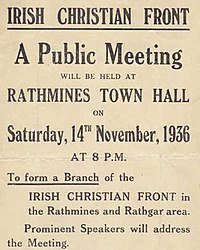
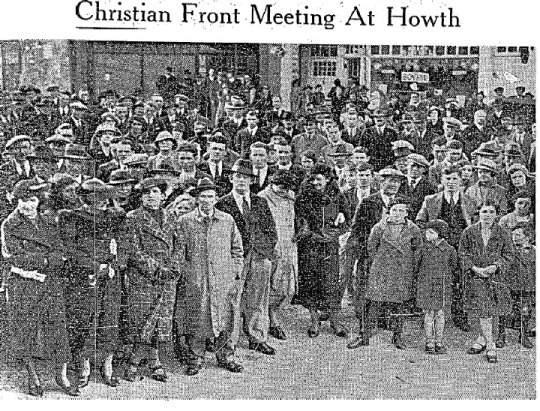
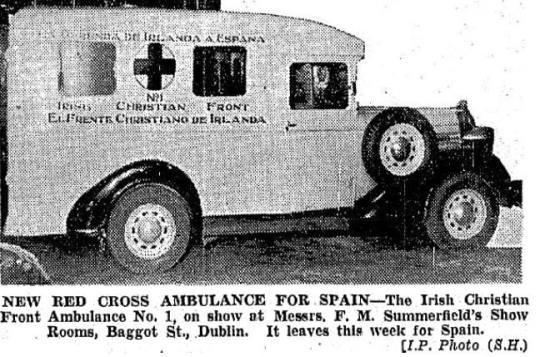
503) Irish Christian Front, ICF, Irlandzki Front Chrześcijański - organizacja katolicka, która istniała od sierpnia 1936 do października 1937. Organizacja została założona z zamiarem okazania wsparcia i zebrania funduszy dla frakcji nacjonalistów podczas hiszpańskiej wojny domowej. Jednak szybko opracował krajowy program polityczny, który był w opozycji do ówczesnego rządu irlandzkiego. ICF była w stanie wysłać nacjonalistom znaczną ilość pieniędzy i zaopatrzenia, ale jej polityka wewnętrzna nigdy nie została przyjęta. ICF pozostaje blisko związana ze swoim założycielem Patrickiem Beltonem, który był jej prezesem i czołową postacią. Irlandzka lewica oskarżyła Beltona i ICF o faszyzm. W odpowiedzi na te oskarżenia Belton stwierdził: „jeśli trzeba być faszystą, by bronić chrześcijaństwa, to ja jestem faszystą i moi koledzy też”. Hiszpańska wojna domowa wybuchła w lipcu 1936 r., kiedy hiszpańscy oficerowie pod dowództwem Francisco Franco zbuntowali się przeciwko lewicowemu rządowi kraju. Sympatia do buntu była powszechna w zagorzałej katolickiej Irlandii, ponieważ rebelianci byli postrzegani jako chroniący swój kraj przed bezbożnym komunizmem. Irlandzkie media, zwłaszcza gazeta Irish Independent, generalnie popierały sprawę rebeliantów („nacjonalistów”). Intensywnie opisywano zabójstwa ponad 6000 duchownych i świeckich katolików. Wojna była ogólnie postrzegana jako konflikt religijny, a nie polityczny. W tym kontekście powstał Irlandzki Front Chrześcijański. ICF została opisana jako „najbardziej znaczący przejaw powszechnego poparcia dla Franco” w Irlandii. Grupa powstała w następstwie wezwania Irish Independent z 22 sierpnia do utworzenia komitetu mającego pomóc w koordynowaniu irlandzkiego wsparcia dla sprawy nacjonalistów. Pierwsze spotkanie ICF odbyło się 31 sierpnia w Mansion House w Dublinie. Na spotkaniu przemawiał Alfie Byrne, burmistrz Dublina. Oddziały powstawały wkrótce w całym kraju, często spontanicznie. ICF był najsilniejszy w Leinster. Belton, siedzący DT w Cumann na nGaedheal, był pierwszym i jedynym prezydentem ICF i jego czołową postacią. Były Cumann na nGaedheal TD Alexander McCabe pełnił funkcję sekretarza. Amerykańska aktywistka Aileen O'Brien pełniła funkcję sekretarza organizacyjnego, a później przedstawiciela grupy w Hiszpanii. Future Clann na Poblachta TD (a później członek Partii Pracy) Joseph Brennan pełnił funkcję wiceprezesa. ICF twierdziła, że budowanie swojej bazy wsparcia było niesekciarskie. Twierdził również, że jest apolityczny, zainteresowany jedynie pomocą kościołowi w Hiszpanii, a nie partyjną polityką. Celem na tym etapie było zademonstrowanie irlandzkiego poparcia dla nacjonalistów i zebranie funduszy. W całym kraju odbyła się seria wieców „potworów”. Pierwszy wiec przyciągnął ponad 15 000. Inne publiczne spotkanie, które odbyło się we wrześniu w Cork, przyciągnęło ponad 40 000 osób. Na spotkaniach tych przemawiali politycy wszystkich głównych partii, podobnie jak czołowi związkowcy, duchowni, naukowcy i dziennikarze. Walki między tłumami a lewicowymi krzykaczami nie były nieznane. Twierdzenie ICF, że jest apolityczne, szybko okazało się fikcją, ponieważ już we wrześniu grupa zwróciła się do rządu Fianna Fáil Éamona de Valera o oficjalne uznanie rządu nacjonalistycznego za prawowity rząd Hiszpanii. Było to sprzeczne z polityką neutralności de Valery. Pomimo wytrwałości i opracowania „Rezolucji Clonmel”, która została potwierdzona przez wiele lokalnych rad, rząd nie ustąpił i w lutym 1937 r. neutralność. Belton miał później twierdzić, że „sympatia partii Fianna Fáil jest całkowicie po stronie Czerwonego Rządu w Hiszpanii”. ICF wspierała również program polityczny, który nie był bezpośrednio związany z Hiszpanią. Stawało się to coraz ważniejsze. ICF wezwała rząd do zakazania komunizmu. Wezwał do realizacji „polityki społecznej opartej na encyklikach papieskich”. Mówiąc dokładniej, opowiadała się za ścisłą cenzurą książek i filmów, które były „w jakikolwiek sposób wywrotowe wobec moralności ludzi”, w szczególności młodzieży. Prowadziła kampanię na rzecz zamknięcia „klubów dla nudystów”. ICF prowadził kampanię na rzecz realizacji polityki gospodarczej opartej na katolicyzmie. Podobnie jak wiele skrajnie prawicowych organizacji w Europie, opowiadała się za korporacjonizmem. Antysemityzm był w coraz większym stopniu cechą ICF. Prowadziła kampanię przeciwko żydowskiej imigracji do Irlandii. Domniemany związek między komunizmem a Żydami był mocno podkreślany przez mówców na wiecach ICF. Mówcy wyrazili również poparcie i podziw dla polityki Adolfa Hitlera w Niemczech i Benito Mussoliniego we Włoszech. ICF zebrała ponad 30 000 funtów dla nacjonalistów w Hiszpanii. Wysłano środki medyczne, w tym karetki pogotowia. Nacjonaliści potwierdzili wsparcie udzielone im przez ICF. ICF nie wykorzystała irlandzkiego poparcia dla Franco, aby wprowadzić prawicową politykę społeczną i gospodarczą w kraju. Jednym z powodów jest kierunek, w jakim obrała wojna w Hiszpanii. Mordy hiszpańskiego duchowieństwa nie trwały dłużej niż do połowy 1936 roku. Kiedy zaangażowały się nazistowskie Niemcy i faszystowskie Włochy, trudno było argumentować, że konflikt był czysto religijny. Okrucieństwa, takie jak bombardowanie Guerniki, również podważyły argument, że nacjonaliści byli stroną bardziej moralnie poprawną. Irlandczycy stali się mniej entuzjastycznie nastawieni do Franco, a tym samym do ICF. Korporacjonizm i sprzeciw wobec demokracji nie były popularnymi ideami w Irlandii, a kierownictwo w Dublinie nie było w stanie nawrócić oddziałów prowincjonalnych na sprawę, nie mówiąc już o szerszej opinii publicznej. Podziały w tej sprawie zaostrzyły się z powodu oskarżeń, że Belton osobiście skorzystał z funduszy zebranych dla Franco. Pomimo szeroko zakrojonego odrzucenia tych sugestii przez Beltona, wyżsi politycy i duchowni zdystansowali się od Beltona i jego organizacji, dodatkowo podważając jej wiarygodność. Sam Belton stracił mandat w wyborach w lipcu 1937 r., działając na temat antykomunizmu. Podział między kierownictwem Dublina a oddziałami prowincjonalnymi co do kierunku politycznego organizacji i oskarżeń o korupcję spowodował zamknięcie wielu oddziałów w 1937 r. Krajowa organizacja została rozwiązana w październiku tego roku.
0 notes
Photo

Thomas F. O'Higgins ( Thomas Francis O'Higgins ) - był irlandzkim politykiem i lekarzem Fine Gael, który był ministrem obrony od 1948 do 1951 r., ministrem przemysłu i handlu od marca 1951 r. do czerwca 1951 r. i przywódcą opozycji od stycznia 1944 r. do czerwca 1944 r. Pełnił funkcję Teachty Dáli ( TD) od 1929 do 1932 i od 1937 do 1953. Dorastał w Stradbally, w hrabstwie Laois, jednym z szesnastu dzieci dr. Thomasa Higginsa i Anne Sullivan. Po raz pierwszy został wybrany na Dáila Éireanna jako Cumann na NGaedheal Teachta Dála (TD) na Dublin North podczas wyborów uzupełniających z 14 marca 1929 r. W wyborach 1932 roku został wybrany do okręgu wyborczego Leix-Offaly. Od wyborów powszechnych 1948 r. reprezentował Cork Borough. Był założycielem Stowarzyszenia Kompanów Armii, popularnie zwanego Blueshirts. Został parlamentarnym przywódcą Fine Gael w 1944 roku, podczas gdy były lider, Richard Mulcahy, próbował zostać wybrany do Seanada Éireanna i utrzymać swoją pozycję. W 1948 r. wstąpił do Gabinetu Johna A. Costello jako Minister Obrony. Pełnił funkcję Ministra Przemysłu i Handlu od marca 1951 do czerwca 1951 roku. Jego synowie Tom O'Higgins i Michael O'Higgins byli również członkami Dáil, byłego służącego w rządzie (i dwukrotnie kandydatem na prezydenta Irlandii) i jako Sędzia Sądu Najwyższego Irlandii w latach 1974-85. Był bratem Kevina O'Higginsa, ministra rządu zamordowanego w 1927 roku. O'Higgins zmarł będąc jeszcze w biurze w 1953 roku.
0 notes
Text
History of the Republic of Ireland
The Irish state came into being in 1922 as the Irish Free State, a dominion of the British Commonwealth, having seceded from the United Kingdom under the Anglo-Irish Treaty. It comprises 26 of the island of Ireland's 32 counties. The 1937 constitution renamed the state Ireland. In 1949 it explicitly became a republic, definitively ending its tenuous membership of the British Commonwealth. In 1973 it joined the European Communities. From its foundation, the Irish Free State was embroiled in a civil war between nationalists supporting the Treaty and opponents who supported a republic. The pro-Treaty side, organised as Cumann na nGaedheal emerged victorious from the conflict and won subsequent elections. They formed the government of the state until 1932, when they peacefully handed over power to the anti-Treaty faction in Fianna Fáil, who defeated them in an election. The Irish state, despite its violent beginnings, has remained a liberal democracy throughout its existence. Changes in the 1930s removed many of the links with Britain established under the Treaty and Ireland's neutrality in the Second World War demonstrated its independence in foreign policy matters from Britain. In the economic sphere, the Irish state has had a mixed performance. On independence, it was one of the wealthier countries in Europe per head of population. However it also inherited from British rule the problems of unemployment, emigration, uneven geographical development and lack of a native industrial base. For much of its history, the state struggled to rectify these problems. Particular peaks of emigration were recorded during the 1930s, 1950s and 1980s, when the Irish economy recorded little growth. In the 1930s, Fianna Fáil governments attempted to create Irish domestic industries using subsidies and protective tariffs. In the late 1950s, these policies were dropped in favour of free trade with selected countries and encouraging of foreign investment with low taxes. This was expanded when Ireland entered the European Economic Community in 1973. In the 1990s and 2000s, Ireland experienced an economic boom known as the Celtic Tiger, in which the country's GDP surpassed many of its European neighbours. Immigration also surpassed emigration, bringing the state's population up to over 4 million. However, since 2008, Ireland has experienced a severe crisis in the banking sector and with sovereign debt. The resultant economic slump has deepened the effect of the world recession on Ireland. From 1937 to 1998, the Irish constitution included a claim on Northern Ireland as a part of the national territory. However, the state also opposed and used its security forces against those armed groups – principally the Provisional Irish Republican Army – who tried to unite Ireland by force. This occurred in the 1950s, throughout the 1970s and 1980s and has continued on a reduced scale. Irish governments meanwhile tried to broker an agreement to the conflict known as The Troubles within Northern Ireland from 1968 to the late 1990s. The British government officially recognised the right of the Irish government to be a party to the Northern negotiations in the Anglo-Irish Agreement of 1985. In 1998, as part of the Good Friday Agreement, the Irish constitution was altered by referendum to remove the territorial claim to Northern Ireland and instead extend the right of Irish citizenship to all the people of the island should they wish to have it.
More details Android, Windows
0 notes
Text
#OTD in Irish History | 30 September:
1430 – A great council meets at Dublin on this date; it states that Irish enemies and English rebels have conquered almost all of Limerick, Tipperary, Kilkenny, Wexford, Carlow, Kildare, Meath and Louth, so that hardly anything but Dublin remains in the colony.
1598 – The English poet Edmund Spenser is appointed Sheriff of Cork.
1691 – The first recorded meeting of the Presbyterian general synod…

View On WordPress
#irelandinspires#irishhistory#OTD#30 September#Arthur Griffith#Carrickfergus#Carrickfergus Castle#Cumann na nGaedheal#History#History of Ireland#Ireland#Irish History#Michael Flannery#Sean O’Riada#Sinn Fein#The Destroyer#The Sullivans#Today in Irish History#US Navy
13 notes
·
View notes
Text
#OTD in 1870 – Bartholemew (Batt) O’Connor is born in Brosna, East Kerry.
Although not a direct participant in the 1916 Rising, Batt O’Connor was sentenced to be shot by British authorities but was sent to Wandsworth Jail and later Frongoch internment camp in North Wales. During the War of Independence he ran a number of safe houses and hid funds and documents for the IRA. He was a strong proponent of Collins going to London for the Anglo-Irish Treaty talks and…
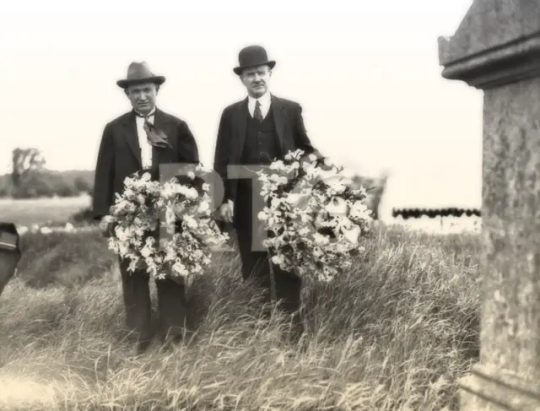
View On WordPress
#1916 Easter Rising#Éamon De Valera#Bartholemew (Batt) O’Connor#Bodenslown#Brosna#Co. Kerry#Co. Kildare#Councillor#Cumann na nGaedheal#Dublin#Gaelic League#IRB#Irish Civil War#Irish Volunteers#Irish War of Independence#Michael Collins#Seán Collins#Sinn Fein#TD#Thomas Clarke#Wolfe Tone&039;s grave
7 notes
·
View notes
Text
#OTD in 1933 – Fine Gael was following the merger of Cumann na nGaedheal, the National Centre Party and the National Guard, popularly known as the “Blueshirts.”
In the face of intimidation of Cumann na nGaedheal meetings by the anti-treaty IRA and the rise in support for Éamon de Valera’s Fianna Fáil from 1926, a new strategy was required to strengthen the voice of the pro-Treaty tradition who now found themselves in opposition. The National Guard, popularly known as the Blueshirts, and originally the Army Comrades Association, a nationalist-conservative…

View On WordPress
#Éamon De Valera#Clann na Poblachta#Cumann na nGaedheal#Desmond Fitzgerald#Eoin O&039;Duffy#Fianna Fáil#Fine Gael#Garret Fitzgerald#James Dillon#Liam Cosgrave#Richard Mulcahy#The Just Society#W.T. Cosgrave#Young Fine Gael
3 notes
·
View notes
Text
#OTD in Irish History | 30 September:
#OTD in Irish History | 30 September:
1430 – A great council meets at Dublin on this date; it states that Irish enemies and English rebels have conquered almost all of Limerick, Tipperary, Kilkenny, Wexford, Carlow, Kildare, Meath and Louth, so that hardly anything but Dublin remains in the colony.
1598 – The English poet Edmund Spenser is appointed Sheriff of Cork.
1691 – The first recorded meeting of the Presbyterian general synod…
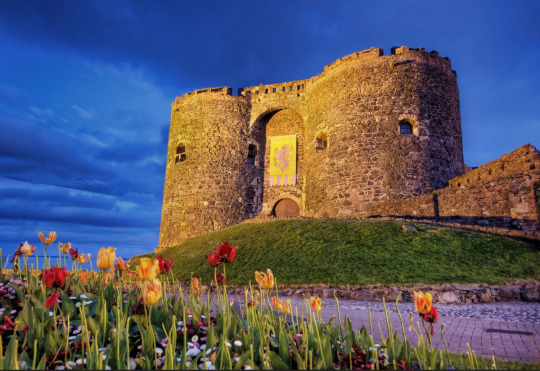
View On WordPress
#irelandinspires#irishhistory#OTD#30 September#Arthur Griffith#Carrickfergus#Carrickfergus Castle#Cumann na nGaedheal#History#History of Ireland#Ireland#Irish History#Michael Flannery#Sean O’Riada#Sinn Fein#The Destroyer#The Sullivans#Today in Irish History#US Navy
7 notes
·
View notes
Text
#OTD in 1972 – Éamon ‘Ned’ Broy, agent for Michael Collins, and later Commissioner of the Garda Síochána, passed away.
During the Irish War of Independence, Ned Broy was a double agent within the Dublin Metropolitan Police (DMP), with the rank of Detective Sergeant. He worked as a clerk inside G Division, the intelligence branch of the DMP. While there he copied sensitive files for Michael Collins. On 7 April 1919, Broy smuggled Collins into G Division’s archives in Great Brunswick Street (now Pearse Street),…

View On WordPress
#&039;G&039; Division#An Garda Síochána#Éamon De Valera#Co. Kildare#Coolegagen cemetery#Cumann na nGaedheal#Dublin#Dublin Metropolitan Police#Fianna Fáil#Great Brunswick Street#Ireland#Irish Civil War#Irish War of Independence#Michael Collins#Ned Broy#Pearse Street#Rathangan#Seán Nunan#Stephen Rea
6 notes
·
View notes
Text
#OTD in 1933 – Fine Gael was following the merger of Cumann na nGaedheal, the National Centre Party and the National Guard, popularly known as the “Blueshirts.”
#OTD in 1933 – Fine Gael was following the merger of Cumann na nGaedheal, the National Centre Party and the National Guard, popularly known as the “Blueshirts.”
In the face of intimidation of Cumann na nGaedheal meetings by the anti-treaty IRA and the rise in support for Éamon de Valera’s Fianna Fáil from 1926, a new strategy was required to strengthen the voice of the pro-Treaty tradition who now found themselves in opposition. The National Guard, popularly known as the Blueshirts, and originally the Army Comrades Association, a nationalist-conservative…

View On WordPress
#Éamon De Valera#Clann na Poblachta#Cumann na nGaedheal#Desmond Fitzgerald#Eoin O&039;Duffy#Fianna Fáil#Fine Gael#Garret Fitzgerald#James Dillon#Liam Cosgrave#Richard Mulcahy#The Just Society#W.T. Cosgrave#Young Fine Gael
2 notes
·
View notes
Text
#OTD in 1870 – Bartholemew (Batt) O’Connor is born in Brosna, East Kerry.
#OTD in 1870 – Bartholemew (Batt) O’Connor is born in Brosna, East Kerry.
Although not a direct participant in the 1916 Rising, Batt O’Connor was sentenced to be shot by British authorities but was sent to Wandsworth Jail and later Frongoch internment camp in North Wales. During the War of Independence he ran a number of safe houses and hid funds and documents for the IRA. He was a strong proponent of Collins going to London for the Anglo-Irish Treaty talks and…

View On WordPress
#1916 Easter Rising#Éamon De Valera#Bartholemew (Batt) O’Connor#Bodenslown#Brosna#Co. Kerry#Co. Kildare#Councillor#Cumann na nGaedheal#Dublin#Gaelic League#IRB#Irish Civil War#Irish Volunteers#Irish War of Independence#Michael Collins#Seán Collins#Sinn Fein#TD#Thomas Clarke#Wolfe Tone&039;s grave
3 notes
·
View notes
Photo
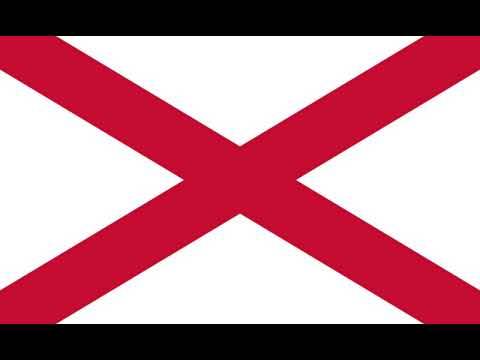
501) Cumann Corpruiteac Náisiúnta, National Corporate Party, Narodowa Partia Korporacyjna - faszystowska partia polityczna w Irlandii, założoną przez Eoina O'Duffy'ego w czerwcu 1935 r. na spotkaniu 500 osób. Oddzielił się od Fine Gael, kiedy O'Duffy został usunięty ze stanowiska lidera tej partii, która została założona przez połączenie Blueshirts O'Duffy'ego, formalnie znanej jako National Guard lub Army Comrades Association, z Cumann na nGaedheal i National Centre Party. Narodowa Partia Korporacyjna chciała ustanowić korporacyjne państwo w Irlandii i była zdecydowanie antykomunistyczna. Jego wojskowym skrzydłem były Zielone Koszule. Około osiemdziesięciu Blueshirts stało się później Greenshirts. Partia zbierała fundusze poprzez publiczne tańce. W przeciwieństwie do Blueshirts, których celem było ustanowienie państwa korporacyjnego, pozostając we Wspólnocie Brytyjskiej w celu uspokojenia umiarkowanych w Fine Gael, National Corporate Party była zaangażowana w ustanowienie republiki poza Imperium Brytyjskim z O'Duffym przedstawiając swoją partię jako prawdziwego spadkobiercę ideałów powstania wielkanocnego. Partia zobowiązała się również do zachowania i promocji języka irlandzkiego i kultury gaelickiej, co powtórzyła późniejsza partia faszystowska w Irlandii, Ailtirí na hAiséirghe. Nie udało mu się jednak zdobyć dużego poparcia, ponieważ większość członków Fine Gael pozostała lojalna wobec tej partii, a O'Duffy zapewnił swojej grupie tylko garstkę lojalnych zwolenników. O'Duffy opuścił Irlandię w 1936 r., aby poprowadzić ochotniczą brygadę irlandzką podczas hiszpańskiej wojny domowej, co doprowadziło do dalszego upadku Narodowej Partii Korporacyjnej. Po powrocie w 1937 roku przeszedł na emeryturę. Bez niego zarówno Zielone Koszule, jak i Narodowa Partia Korporacyjna zniknęły. Partia przestała istnieć w 1937 roku.
0 notes
Text
#OTD in Irish History | 30 September:
#OTD in Irish History | 30 September:
1430 – A great council meets at Dublin on this date; it states that Irish enemies and English rebels have conquered almost all of Limerick, Tipperary, Kilkenny, Wexford, Carlow, Kildare, Meath and Louth, so that hardly anything but Dublin remains in the colony.
1598 – The English poet Edmund Spenser is appointed Sheriff of Cork.
1691 – The first recorded meeting of the Presbyterian general synod…
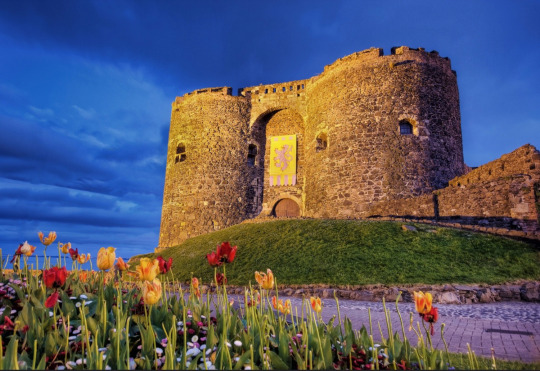
View On WordPress
#irelandinspires#irishhistory#OTD#30 September#Arthur Griffith#Carrickfergus#Carrickfergus Castle#Cumann na nGaedheal#History#History of Ireland#Ireland#Irish History#Michael Flannery#Sean O’Riada#Sinn Fein#The Destroyer#The Sullivans#Today in Irish History#US Navy
10 notes
·
View notes
Text
#OTD in 1872 – Birth of founder of Sinn Féin and co-signatory of the Anglo-Irish Treaty, Arthur Griffith, in Dublin.
#OTD in 1872 – Birth of founder of Sinn Féin and co-signatory of the Anglo-Irish Treaty, Arthur Griffith, in Dublin.
Arthur Griffith was one of the most important players in Irish Independence. He founded Sinn Féin in 1905 as an Irish nationalist party whose objective was “to establish in Ireland’s capital a national legislature endowed with the moral authority of the Irish nation”.
Griffith’s fierce criticism of the Irish Parliamentary Party’s alliance with British Liberalism was heavily influenced by the…
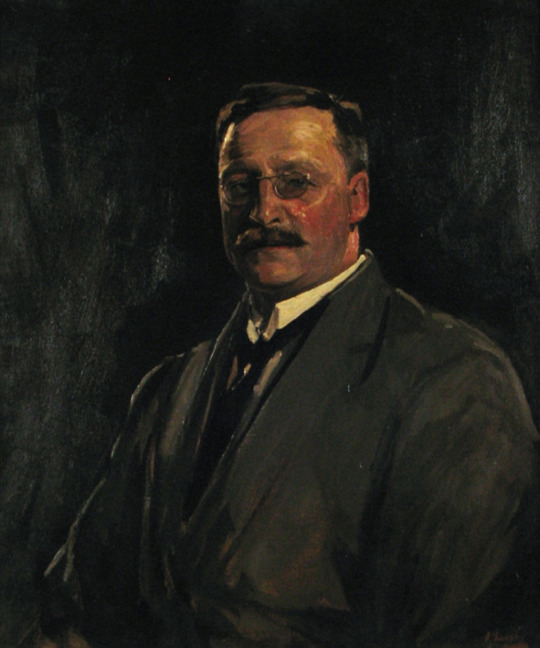
View On WordPress
#Anglo-Irish Treaty#Arthur Griffith#Cumann na nGaedheal#Dáil Eireann#Dublin#John Mitchel#Michael Collins#Portrait of Arthur Griffith by Sir John Lavery#Sinn Fein
3 notes
·
View notes
Text
#OTD in 1972 – Éamon ‘Ned’ Broy, agent for Michael Collins, and later Commissioner of the Garda Síochána, passed away.
#OTD in 1972 – Éamon ‘Ned’ Broy, agent for Michael Collins, and later Commissioner of the Garda Síochána, passed away.
During the Irish War of Independence, Ned Broy was a double agent within the Dublin Metropolitan Police (DMP), with the rank of Detective Sergeant. He worked as a clerk inside G Division, the intelligence branch of the DMP. While there he copied sensitive files for Michael Collins. On 7 April 1919, Broy smuggled Collins into G Division’s archives in Great Brunswick Street (now Pearse Street),…

View On WordPress
#&039;G&039; Division#An Garda Síochána#Éamon De Valera#Co. Kildare#Coolegagen cemetery#Cumann na nGaedheal#Dublin#Dublin Metropolitan Police#Fianna Fáil#Great Brunswick Street#Ireland#Irish Civil War#Irish War of Independence#Michael Collins#Ned Broy#Pearse Street#Rathangan#Seán Nunan#Stephen Rea
5 notes
·
View notes
Text
#OTD in 1933 – Fine Gael was following the merger of Cumann na nGaedheal, the National Centre Party and the National Guard, popularly known as the “Blueshirts.”
#OTD in 1933 – Fine Gael was following the merger of Cumann na nGaedheal, the National Centre Party and the National Guard, popularly known as the “Blueshirts.”
In the face of intimidation of Cumann na nGaedheal meetings by the anti-treaty IRA and the rise in support for Éamon de Valera’s Fianna Fáil from 1926, a new strategy was required to strengthen the voice of the pro-Treaty tradition who now found themselves in opposition. The National Guard, popularly known as the Blueshirts, and originally the Army Comrades Association, a nationalist-conservative…

View On WordPress
#Éamon De Valera#Clann na Poblachta#Cumann na nGaedheal#Desmond Fitzgerald#Eoin O&039;Duffy#Fianna Fáil#Fine Gael#Garret Fitzgerald#James Dillon#Liam Cosgrave#Richard Mulcahy#The Just Society#W.T. Cosgrave#Young Fine Gael
3 notes
·
View notes